1 of 33
Download to read offline

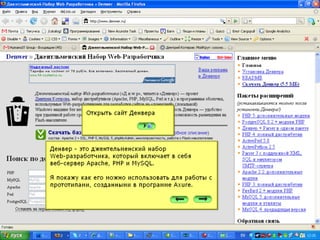
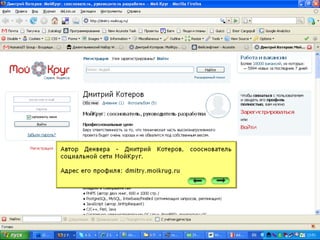
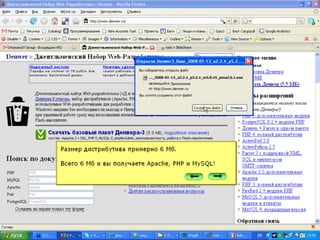



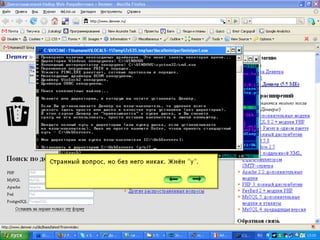
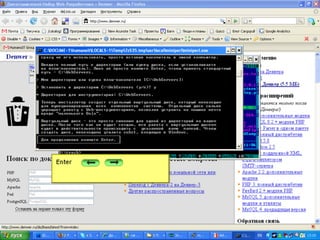

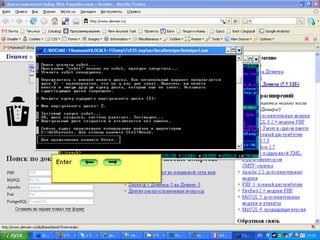
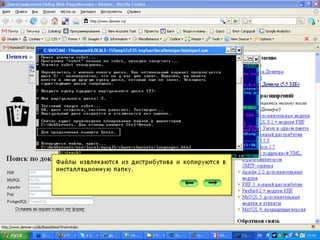
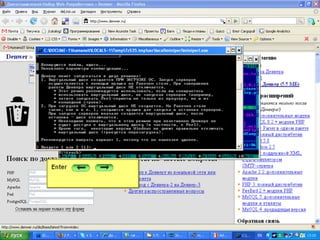

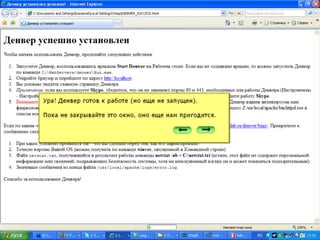

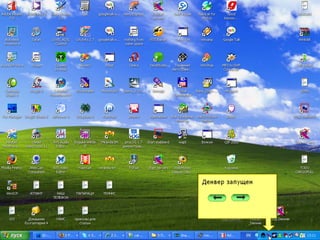

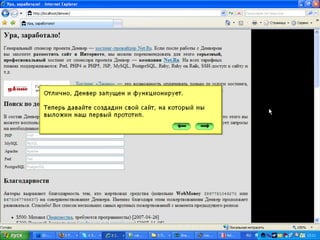
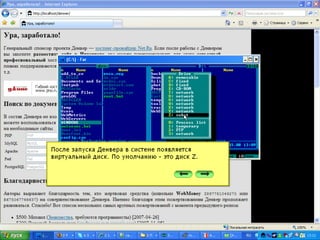
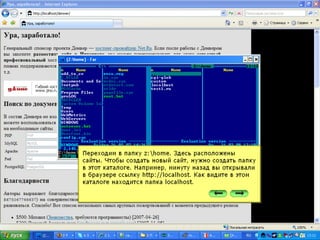
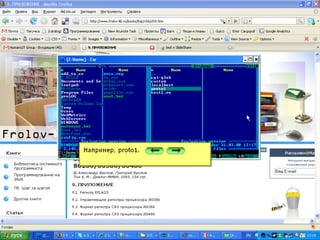
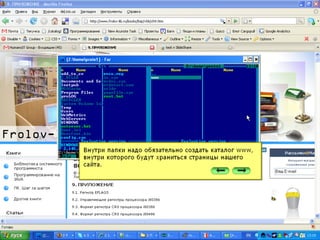

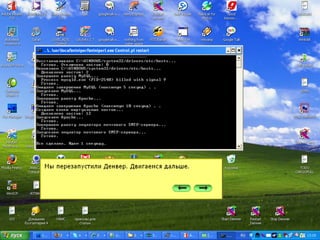
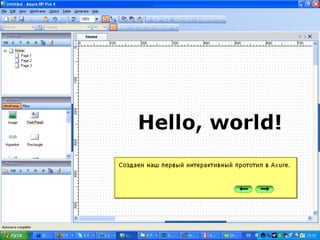
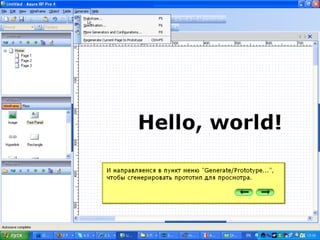
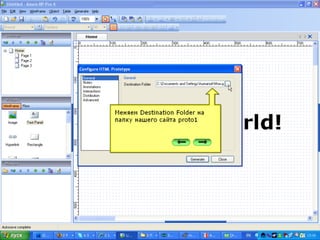

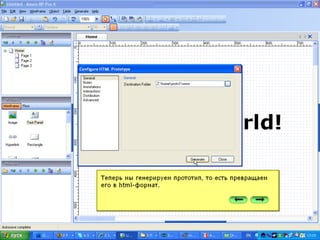

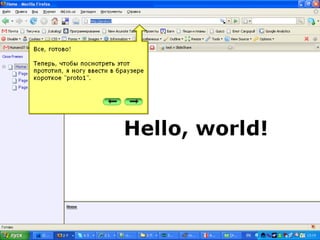

Ad
Recommended
Persuasive Design
Persuasive DesignAlexander Sergeev
╠²
ąöąŠą║čāą╝ąĄąĮčé ąŠą▒čüčāąČą┤ą░ąĄčé ą┐čĆąĖąĮčåąĖą┐čŗ čŹčäč乥ą║čéąĖą▓ąĮąŠą│ąŠ ą┤ąĖąĘą░ą╣ąĮą░ ą┤ą╗čÅ ąĖąĮč鹥čĆąĮąĄčé-ą┐čĆąŠą┤ą░ąČ, ą┐ąŠą┤č湥čĆą║ąĖą▓ą░čÅ ą▓ą░ąČąĮąŠčüčéčī ą┐ąŠą╗čīąĘąŠą▓ą░č鹥ą╗čÅ ąĖ čāą┤ąŠą▒čüčéą▓ą░. ą×čüąĮąŠą▓ąĮąŠąĄ ą▓ąĮąĖą╝ą░ąĮąĖąĄ čāą┤ąĄą╗čÅąĄčéčüčÅ čüąŠąĘą┤ą░ąĮąĖčÄ ą┐čĆąĖą▓ą╗ąĄą║ą░č鹥ą╗čīąĮąŠą│ąŠ ąĖ čäčāąĮą║čåąĖąŠąĮą░ą╗čīąĮąŠą│ąŠ ąĖąĮč鹥čĆč乥ą╣čüą░, ą║ąŠč鹊čĆčŗą╣ čüą┐ąŠčüąŠą▒čüčéą▓čāąĄčé ą║ąŠąĮą▓ąĄčĆčüąĖąĖ ą┐ąŠčüąĄčéąĖč鹥ą╗ąĄą╣ ą▓ ą┐ąŠą║čāą┐ą░č鹥ą╗ąĄą╣. ąóą░ą║ąČąĄ čĆą░čüčüą╝ą░čéčĆąĖą▓ą░čÄčéčüčÅ ą╝ąĄč鹊ą┤čŗ ą┐ąŠą▓čŗčłąĄąĮąĖčÅ ą┤ąŠą▓ąĄčĆąĖčÅ ą║ čüą░ą╣čéčā ąĖ ąĮąĄąŠą▒čģąŠą┤ąĖą╝ąŠčüčéąĖ ą┐čĆąĄą┤ąŠčüčéą░ą▓ą╗ąĄąĮąĖčÅ ą┐ąŠą╗ąĄąĘąĮčŗčģ čāčüą╗čāą│.Somedia Presentation
Somedia PresentationAlexander Sergeev
╠²
ąÜąŠą╝ą┐ą░ąĮąĖčÅ Somedia, ąŠčüąĮąŠą▓ą░ąĮąĮą░čÅ ą▓ 2006 ą│ąŠą┤čā, čÅą▓ą╗čÅąĄčéčüčÅ ą┐ąĄčĆą▓čŗą╝ ąŠąĮą╗ą░ą╣ąĮ-ąĖąĘą┤ą░č鹥ą╗čīčüčéą▓ąŠą╝ ą┐ąŠą╗ąĮąŠą│ąŠ čåąĖą║ą╗ą░ ą▓ ąĀąŠčüčüąĖąĖ, ą┐čĆąĄą┤ą╗ą░ą│ą░čÄčēąĖą╝ čāčüą╗čāą│ąĖ ą┐ąŠ čüąŠąĘą┤ą░ąĮąĖčÄ ąĖ čüąŠą┐čĆąŠą▓ąŠąČą┤ąĄąĮąĖčÄ ąĖąĮč鹥čĆąĮąĄčé-ą┐čĆąŠąĄą║č鹊ą▓, ąŠčĆąĖąĄąĮčéąĖčĆąŠą▓ą░ąĮąĮčŗčģ ąĮą░ čåąĄą╗ąĄą▓čŗąĄ ą│čĆčāą┐ą┐čŗ. Somedia čĆą░ąĘčĆą░ą▒ą░čéčŗą▓ą░ąĄčé ą┐čĆąŠąĄą║čéčŗ čĆą░ąĘą╗ąĖčćąĮąŠą╣ čüą╗ąŠąČąĮąŠčüčéąĖ, ąĖčüą┐ąŠą╗čīąĘčāčÅ čüąŠą▒čüčéą▓ąĄąĮąĮčāčÄ ą┐ą╗ą░čéč乊čĆą╝čā Kiwi Pro, ą║ąŠč鹊čĆą░čÅ ąŠą▒ąĄčüą┐ąĄčćąĖą▓ą░ąĄčé ą▓čŗčüąŠą║čāčÄ ąĮą░ą│čĆčāąĘąŠčćąĮčāčÄ čüą┐ąŠčüąŠą▒ąĮąŠčüčéčī ąĖ ą╝ąŠą┤čāą╗čīąĮąŠčüčéčī. ąÜąŠą╝ą┐ą░ąĮąĖčÅ čéą░ą║ąČąĄ ą┐čĆąŠą▓ąŠą┤ąĖčé ą╝ą░čĆą║ąĄčéąĖąĮą│ąŠą▓čŗąĄ ąĖčüčüą╗ąĄą┤ąŠą▓ą░ąĮąĖčÅ ąĖ ą┐čĆąĄą┤ą╗ą░ą│ą░ąĄčé ą▓čüąĄčüč鹊čĆąŠąĮąĮčÄčÄ ą┐ąŠą┤ą┤ąĄčƹȹ║čā, ą▓ą║ą╗čÄčćą░čÅ čüąŠąĘą┤ą░ąĮąĖąĄ čāąĮąĖą║ą░ą╗čīąĮąŠą│ąŠ ą║ąŠąĮč鹥ąĮčéą░ ąĖ čāą┐čĆą░ą▓ą╗ąĄąĮąĖčÅ ą┐čĆąŠąĄą║čéą░ą╝ąĖ.ą«ąĘą░ą▒ąĖą╗ąĖčéąĖ ą║ą░ą║ ą│ąŠčĆą╝ąŠąĮ čĆąŠčüčéą░ čüąŠčåąĖą░ą╗čīąĮąŠą╣ čüąĄčéąĖ
ą«ąĘą░ą▒ąĖą╗ąĖčéąĖ ą║ą░ą║ ą│ąŠčĆą╝ąŠąĮ čĆąŠčüčéą░ čüąŠčåąĖą░ą╗čīąĮąŠą╣ čüąĄčéąĖAlexander Sergeev
╠²
ąöąŠą║čāą╝ąĄąĮčé ąŠą▒čüčāąČą┤ą░ąĄčé čĆąŠą╗čī čĹʹ░ą▒ąĖą╗ąĖčéąĖ ą▓ čüąŠčåąĖą░ą╗čīąĮčŗčģ čüąĄčéčÅčģ, ą▓čŗą┤ąĄą╗čÅčÅ ąĄą│ąŠ ą║ą░ą║ ą▓ą░ąČąĮčŗą╣ čäą░ą║č鹊čĆ ą┤ą╗čÅ čāčüą┐ąĄčłąĮąŠą│ąŠ ą▓ąĘą░ąĖą╝ąŠą┤ąĄą╣čüčéą▓ąĖčÅ ą┐ąŠą╗čīąĘąŠą▓ą░č鹥ą╗ąĄą╣ čü ą┐ą╗ą░čéč乊čĆą╝ą░ą╝ąĖ. ąĀą░čüčüą╝ą░čéčĆąĖą▓ą░čÄčéčüčÅ čüčéčĆą░č鹥ą│ąĖąĖ ą┐čĆąĖą▓ą╗ąĄč湥ąĮąĖčÅ ą┐ąŠą╗čīąĘąŠą▓ą░č鹥ą╗ąĄą╣, ą│ąĄąĮąĄčĆą░čåąĖąĖ ą║ąŠąĮč鹥ąĮčéą░ ąĖ ą┐ąŠą▓čŗčłąĄąĮąĖčÅ čāčĆąŠą▓ąĮčÅ ą▓ąĘą░ąĖą╝ąŠą┤ąĄą╣čüčéą▓ąĖčÅ, ąŠą┐ąĖčĆą░čÅčüčī ąĮą░ ą┐čĆąĖą╝ąĄčĆčŗ čĆą░ąĘą╗ąĖčćąĮčŗčģ čüąŠčåąĖą░ą╗čīąĮčŗčģ čüąĄč鹥ą╣. ąóą░ą║ąČąĄ čāą┐ąŠą╝ąĖąĮą░čÄčéčüčÅ ą┐ąŠčéčĆąĄą▒ąĮąŠčüčéąĖ ą┐ąŠą╗čīąĘąŠą▓ą░č鹥ą╗ąĄą╣ ąĖ ą▓ą░ąČąĮąŠčüčéčī ąĖčüčüą╗ąĄą┤ąŠą▓ą░ąĮąĖčÅ ąĖčģ ąĖąĮč鹥čĆąĄčüąŠą▓ ą┤ą╗čÅ čüąŠąĘą┤ą░ąĮąĖčÅ čŹčäč乥ą║čéąĖą▓ąĮčŗčģ ąŠąĮą╗ą░ą╣ąĮ-čüąŠąŠą▒čēąĄčüčéą▓.Expressionism
ExpressionismAlexander Sergeev
╠²
ąŁą║čüą┐čĆąĄčüčüąĖąŠąĮąĖąĘą╝ ą┐čĆąĄą┤čüčéą░ą▓ą╗čÅąĄčé čüąŠą▒ąŠą╣ čģčāą┤ąŠąČąĄčüčéą▓ąĄąĮąĮąŠąĄ ąĮą░ą┐čĆą░ą▓ą╗ąĄąĮąĖąĄ, ąŠčüąĮąŠą▓ą░ąĮąĮąŠąĄ ąĮą░ ąĖąĮą┤ąĖą▓ąĖą┤čāą░ą╗ąĖčüčéąĖč湥čüą║ąŠą╝ ą┐čĆąŠč鹥čüč鹥 ą┐čĆąŠčéąĖą▓ čāčĆąŠą┤ą╗ąĖą▓ąŠą│ąŠ ą╝ąĖčĆą░ ąĖ čćčāą▓čüčéą▓ą░čģ ąŠčéčćčāąČą┤ąĄąĮąĖčÅ. ą×čüąĮąŠą▓ąĮčŗąĄ čģčāą┤ąŠąČąĄčüčéą▓ąĄąĮąĮčŗąĄ ą┐čĆąĖąĄą╝čŗ ą▓ą║ą╗čÄčćą░čÄčé ąŠčéą║ą░ąĘ ąŠčé ąĖą╗ą╗čĹʹŠčĆąĮąŠą│ąŠ ą┐čĆąŠčüčéčĆą░ąĮčüčéą▓ą░, ą┤ąĄč乊čĆą╝ą░čåąĖčÄ ą┐čĆąĄą┤ą╝ąĄč鹊ą▓ ąĖ čĆąĄąĘą║ąĖąĄ čåą▓ąĄč鹊ą▓čŗąĄ ą║ąŠąĮčéčĆą░čüčéčŗ. ąĪčĆąĄą┤ąĖ ą┐čĆąĄą┤čłąĄčüčéą▓ąĄąĮąĮąĖą║ąŠą▓ 菹║čüą┐čĆąĄčüčüąĖąŠąĮąĖąĘą╝ą░ ą▓čŗą┤ąĄą╗čÅčÄčéčüčÅ ąÆąĖąĮčüąĄąĮčé ąÆą░ąĮ ąōąŠą│, ąŁą┤ą▓ą░čĆą┤ ą£čāąĮą║ ąĖ ą×čéč鹊 ąöąĖą║čü, čćčīąĖ čĆą░ą▒ąŠčéčŗ ąŠčéčĆą░ąČą░čÄčé ą┐ąĄčüčüąĖą╝ąĖčüčéąĖčćąĮąŠąĄ ą▓ąŠčüą┐čĆąĖčÅčéąĖąĄ čüąŠčåąĖą░ą╗čīąĮąŠą╣ čĆąĄą░ą╗čīąĮąŠčüčéąĖ.ą× ą┐čĆąŠč乥čüčüąĖąĖ čĹʹ░ą▒ąĖą╗ąĖčéąĖ-čüą┐ąĄčåąĖą░ą╗ąĖčüčéą░ ą┤ą╗čÅ čüčéčāą┤ąĄąĮč鹊ą▓-ą┐čüąĖčģąŠą╗ąŠą│ąŠą▓
ą× ą┐čĆąŠč乥čüčüąĖąĖ čĹʹ░ą▒ąĖą╗ąĖčéąĖ-čüą┐ąĄčåąĖą░ą╗ąĖčüčéą░ ą┤ą╗čÅ čüčéčāą┤ąĄąĮč鹊ą▓-ą┐čüąĖčģąŠą╗ąŠą│ąŠą▓Alexander Sergeev
╠²
ąöąŠą║ą╗ą░ą┤ ąÉą╗ąĄą║čüą░ąĮą┤čĆą░ ąĪąĄčĆą│ąĄąĄą▓ą░ ą║ą░čüą░ąĄčéčüčÅ ą┐čĆąŠč乥čüčüąĖąĖ čĹʹ░ą▒ąĖą╗ąĖčéąĖ-čüą┐ąĄčåąĖą░ą╗ąĖčüčéą░ ąĖ ą▓ąŠąĘą╝ąŠąČąĮąŠčüč鹥ą╣ čéčĆčāą┤ąŠčāčüčéčĆąŠą╣čüčéą▓ą░ ą┤ą╗čÅ čüčéčāą┤ąĄąĮč鹊ą▓-ą┐čüąĖčģąŠą╗ąŠą│ąŠą▓. ąÆ ąĮąĄą╝ ąŠą┐ąĖčüčŗą▓ą░čÄčéčüčÅ ą║ą╗čÄč湥ą▓čŗąĄ ą░čüą┐ąĄą║čéčŗ čĹʹ░ą▒ąĖą╗ąĖčéąĖ, ą▓ą║ą╗čÄčćą░čÅ ąĄą│ąŠ ąŠą┐čĆąĄą┤ąĄą╗ąĄąĮąĖąĄ, ą┐čĆąŠčåąĄčüčü čĆą░ąĘčĆą░ą▒ąŠčéą║ąĖ ą┐ąŠą╗čīąĘąŠą▓ą░č鹥ą╗čīčüą║ąĖčģ ąĖąĮč鹥čĆč乥ą╣čüąŠą▓ ąĖ ą╝ąĄč鹊ą┤čŗ č鹥čüčéąĖčĆąŠą▓ą░ąĮąĖčÅ. ąóą░ą║ąČąĄ čĆą░čüčüą╝ą░čéčĆąĖą▓ą░čÄčéčüčÅ ąĮą░ą▓čŗą║ąĖ, ąĮąĄąŠą▒čģąŠą┤ąĖą╝čŗąĄ ą┤ą╗čÅ čĆą░ą▒ąŠčéčŗ ą▓ ąŠą▒ą╗ą░čüčéąĖ čĹʹ░ą▒ąĖą╗ąĖčéąĖ, ąĖ čŹčéą░ą┐čŗ ą┐čĆą░ą║čéąĖč湥čüą║ąŠą╣ ą┤ąĄčÅč鹥ą╗čīąĮąŠčüčéąĖ čüą┐ąĄčåąĖą░ą╗ąĖčüčéą░.Social Networks Monetization
Social Networks MonetizationOuriel Ohayon
╠²
There are several myths about how social networks make money. In reality, many social networks are profitable through various revenue streams like advertising, selling digital goods, charging for premium memberships and services. While some networks have yet to make money, the opportunities for generating revenue from social networks are substantial and include areas like mobile applications, games, location-based services, e-commerce and enterprise solutions. A thriving ecosystem of supporting businesses is also emerging around social networks.How do we prioritize our product backlog in Hygger.io?
How do we prioritize our product backlog in Hygger.io?Alexander Sergeev
╠²
The document discusses the importance of prioritization in product management, emphasizing that a systematic approach can help startups avoid distractions and focus on impactful features. It outlines a process for gathering ideas, setting goals, and utilizing various metrics to evaluate and prioritize product features effectively. Techniques such as planning poker and lean prioritization are suggested, alongside criteria for scoring features based on their potential impact and value to users.ąÜą░ą║ ą╝čŗ ą┤ąĄą╗ą░ąĄą╝ ą┐čĆąĖąŠčĆąĖčéąĖąĘą░čåąĖčÄ ąĮą░čłąĄą│ąŠ product backlog ą▓ Hygger.io
ąÜą░ą║ ą╝čŗ ą┤ąĄą╗ą░ąĄą╝ ą┐čĆąĖąŠčĆąĖčéąĖąĘą░čåąĖčÄ ąĮą░čłąĄą│ąŠ product backlog ą▓ Hygger.ioAlexander Sergeev
╠²
ąöąŠą║čāą╝ąĄąĮčé čĆą░čüčüą╝ą░čéčĆąĖą▓ą░ąĄčé ą▓ą░ąČąĮąŠčüčéčī ą┐čĆąĖąŠčĆąĖčéąĖąĘą░čåąĖąĖ ą▓ čāą┐čĆą░ą▓ą╗ąĄąĮąĖąĖ ą┐čĆąŠą┤čāą║čéą░ą╝ąĖ, ą▓čŗą┤ąĄą╗čÅčÅ ą║ą╗čÄč湥ą▓čŗąĄ ą╝ąĄč鹊ą┤ąĖą║ąĖ ąĖ ą┐čĆąĖąĮčåąĖą┐čŗ, čéą░ą║ąĖąĄ ą║ą░ą║ lean ą┐čĆąĖąŠčĆąĖčéąĖąĘą░čåąĖčÅ ąĖ čüą║ąŠčĆąĖąĮą│ čäąĖč湥ą╣. ą×ą▒čüčāąČą┤ą░čÄčéčüčÅ ąĖčüč鹊čćąĮąĖą║ąĖ ąĖą┤ąĄą╣ ą┤ą╗čÅ ąĮąŠą▓čŗčģ čäčāąĮą║čåąĖąŠąĮą░ą╗čīąĮąŠčüč鹥ą╣ ąĖ ą╝ąĄč鹊ą┤čŗ ąŠčåąĄąĮą║ąĖ ąĖčģ čåąĄąĮąĮąŠčüčéąĖ, ą▓ą║ą╗čÄčćą░čÅ ą▓ąĮąĄčłąĮąĖąĄ ąĖ ą▓ąĮčāčéčĆąĄąĮąĮąĖąĄ č鹥čģąĮąĖą║ąĖ. ąóą░ą║ąČąĄ ą┐čĆąĄą┤čüčéą░ą▓ą╗ąĄąĮčŗ čĆąĄąĘčāą╗čīčéą░čéčŗ ą▓ąĮąĄą┤čĆąĄąĮąĖčÅ ą┤ą░ąĮąĮčŗčģ ą┐čĆą░ą║čéąĖą║, ą║ąŠč鹊čĆčŗąĄ ą┐ąŠąĘą▓ąŠą╗čÅčÄčé čāą╗čāčćčłąĖčéčī čüčéčĆą░č鹥ą│ąĖč湥čüą║ąĖąĄ ą┐ąŠą║ą░ąĘą░č鹥ą╗ąĖ ąĖ čüąĮąĖąĘąĖčéčī ą▓ą╗ąĖčÅąĮąĖąĄ čüčāą▒čŖąĄą║čéąĖą▓ąĮčŗčģ ą╝ąĮąĄąĮąĖą╣ ąĮą░ ą┐čĆąĖąĮčÅčéąĖąĄ čĆąĄčłąĄąĮąĖą╣.Beauty
BeautyAlexander Sergeev
╠²
The document discusses three rules for designing elegant interfaces and describes applying them to redesign an interface to make it more elegant. It explains that the interface will be redrawn in a vector format, some details may be lost but this is not expected to significantly impact the experience. The goal is to follow the three rules of interface design to improve elegance.Grids Are Good
Grids Are GoodAlexander Sergeev
╠²
The document discusses the use of grids in design. It provides a brief history of grids from early ornamental designs to modern rational designs influenced by machines and standardization. The document then discusses how to build a grid for a specific design problem involving a 1024x768 screen size and big advertisement units. It demonstrates going through multiple attempts to define an appropriate grid, including rounding advertisement column widths, extrapolating unit sizes, and consolidating units into columns. The optimal solution presented uses a 14-unit grid with 62 pixel units to allow for flexible layout of content while accommodating advertisements.Web Application Solutions
Web Application SolutionsAlexander Sergeev
╠²
DHTML combines HTML, JavaScript, and CSS to enable dynamic content and interactivity beyond traditional HTML. It allows for animation, drag and drop, and style changes to interface elements. However, support is inconsistent across browsers. Logic and data are delivered to the browser with each page load, increasing server loads and requiring full page reloads. Common UI features can also be difficult to implement with DHTML.Google Analytics - ą║ą░ą║ čüčĆąĄą┤čüčéą▓ąŠ čāą▒ąĄąČą┤ąĄąĮąĖčÅ ąĘą░ą║ą░ąĘčćąĖą║ą░ ą┐ąŠčéčĆą░čéąĖčéčīčüčÅ ąĮą░ čĹʹ░ą▒ąĖą╗ąĖčéąĖ
Google Analytics - ą║ą░ą║ čüčĆąĄą┤čüčéą▓ąŠ čāą▒ąĄąČą┤ąĄąĮąĖčÅ ąĘą░ą║ą░ąĘčćąĖą║ą░ ą┐ąŠčéčĆą░čéąĖčéčīčüčÅ ąĮą░ čĹʹ░ą▒ąĖą╗ąĖčéąĖAlexander Sergeev
╠²
ąöąŠą║čāą╝ąĄąĮčé ąŠą▒čüčāąČą┤ą░ąĄčé ąĖčüą┐ąŠą╗čīąĘąŠą▓ą░ąĮąĖąĄ Google Analytics ą┤ą╗čÅ ą┐ąŠą▓čŗčłąĄąĮąĖčÅ čĹʹ░ą▒ąĖą╗ąĖčéąĖ ą▓ąĄą▒-čüą░ą╣čéą░ ąĖ čāą▒ąĄąČą┤ąĄąĮąĖčÅ ąĘą░ą║ą░ąĘčćąĖą║ąŠą▓ ąĖąĮą▓ąĄčüčéąĖčĆąŠą▓ą░čéčī ą▓ čāą╗čāčćčłąĄąĮąĖąĄ ąĖąĮč鹥čĆč乥ą╣čüą░. ą×čüąĮąŠą▓ąĮąŠąĄ ą▓ąĮąĖą╝ą░ąĮąĖąĄ čāą┤ąĄą╗čÅąĄčéčüčÅ ą╝ąĄčéčĆąĖą║ą░ą╝ ą║ąŠąĮą▓ąĄčĆčüąĖąĖ, ą░ąĮą░ą╗ąĖąĘčā čĆąĄą║ą╗ą░ą╝ąĮčŗčģ ą║ą░ą╝ą┐ą░ąĮąĖą╣ ąĖ ą┐čĆąŠą▒ą╗ąĄą╝ą░ą╝ čü čĆąĄą│ąĖčüčéčĆą░čåąĖąĄą╣ ą┐ąŠą╗čīąĘąŠą▓ą░č鹥ą╗ąĄą╣. ąÉą▓č鹊čĆ čéą░ą║ąČąĄ ą┐čĆąĄą┤ą╗ą░ą│ą░ąĄčé ą┐čĆąĖą╝ąĄčĆčŗ ą┐čĆąĖą╝ąĄąĮąĄąĮąĖčÅ Google Analytics ą┤ą╗čÅ ąŠčåąĄąĮą║ąĖ čŹčäč乥ą║čéąĖą▓ąĮąŠčüčéąĖ čüą░ą╣čéą░ ąĖ ąĖąĮč鹥ą│čĆą░čåąĖąĖ ąĄą│ąŠ ą▓ ą┐čĆąŠąĄą║čéčŗ.ClickDensity - ąĮąŠą▓ą░čÅ ą▒čāą║ą▓ą░ ą▓ ą▓ąĄą▒-ą░ąĮą░ą╗ąĖčéąĖą║ąĄ
ClickDensity - ąĮąŠą▓ą░čÅ ą▒čāą║ą▓ą░ ą▓ ą▓ąĄą▒-ą░ąĮą░ą╗ąĖčéąĖą║ąĄAlexander Sergeev
╠²
ąöąŠą║čāą╝ąĄąĮčé ą┐čĆąĄą┤čüčéą░ą▓ą╗čÅąĄčé čüąŠą▒ąŠą╣ ąĖąĮč乊čĆą╝ą░čåąĖčÄ ąŠ ą║ąŠą╝ą┐ą░ąĮąĖąĖ Humanoit Group ąĖ ąĄąĄ ą▒ą╗ąŠą│ą░čģ, ą▓ą║ą╗čÄčćą░čÅ Guicci, ą┐ąŠčüą▓čÅčēąĄąĮąĮčŗą╣ čĹʹ░ą▒ąĖą╗ąĖčéąĖ. ąÆ ąĮąĄą╝ čéą░ą║ąČąĄ čāą┐ąŠą╝ąĖąĮą░čÄčéčüčÅ ą┤čĆčāą│ąĖąĄ čüą░ą╣čéčŗ, čéą░ą║ąĖąĄ ą║ą░ą║ tut.by ąĖ oz.by. ąÆčüčÅ ąĖąĮč乊čĆą╝ą░čåąĖčÅ ąĘą░ą▓ąĄčĆčłą░ąĄčéčüčÅ ą▒ą╗ą░ą│ąŠą┤ą░čĆąĮąŠčüčéčīčÄ ąĘą░ ą▓ąĮąĖą╝ą░ąĮąĖąĄ.More Related Content
More from Alexander Sergeev (7)
How do we prioritize our product backlog in Hygger.io?
How do we prioritize our product backlog in Hygger.io?Alexander Sergeev
╠²
The document discusses the importance of prioritization in product management, emphasizing that a systematic approach can help startups avoid distractions and focus on impactful features. It outlines a process for gathering ideas, setting goals, and utilizing various metrics to evaluate and prioritize product features effectively. Techniques such as planning poker and lean prioritization are suggested, alongside criteria for scoring features based on their potential impact and value to users.ąÜą░ą║ ą╝čŗ ą┤ąĄą╗ą░ąĄą╝ ą┐čĆąĖąŠčĆąĖčéąĖąĘą░čåąĖčÄ ąĮą░čłąĄą│ąŠ product backlog ą▓ Hygger.io
ąÜą░ą║ ą╝čŗ ą┤ąĄą╗ą░ąĄą╝ ą┐čĆąĖąŠčĆąĖčéąĖąĘą░čåąĖčÄ ąĮą░čłąĄą│ąŠ product backlog ą▓ Hygger.ioAlexander Sergeev
╠²
ąöąŠą║čāą╝ąĄąĮčé čĆą░čüčüą╝ą░čéčĆąĖą▓ą░ąĄčé ą▓ą░ąČąĮąŠčüčéčī ą┐čĆąĖąŠčĆąĖčéąĖąĘą░čåąĖąĖ ą▓ čāą┐čĆą░ą▓ą╗ąĄąĮąĖąĖ ą┐čĆąŠą┤čāą║čéą░ą╝ąĖ, ą▓čŗą┤ąĄą╗čÅčÅ ą║ą╗čÄč湥ą▓čŗąĄ ą╝ąĄč鹊ą┤ąĖą║ąĖ ąĖ ą┐čĆąĖąĮčåąĖą┐čŗ, čéą░ą║ąĖąĄ ą║ą░ą║ lean ą┐čĆąĖąŠčĆąĖčéąĖąĘą░čåąĖčÅ ąĖ čüą║ąŠčĆąĖąĮą│ čäąĖč湥ą╣. ą×ą▒čüčāąČą┤ą░čÄčéčüčÅ ąĖčüč鹊čćąĮąĖą║ąĖ ąĖą┤ąĄą╣ ą┤ą╗čÅ ąĮąŠą▓čŗčģ čäčāąĮą║čåąĖąŠąĮą░ą╗čīąĮąŠčüč鹥ą╣ ąĖ ą╝ąĄč鹊ą┤čŗ ąŠčåąĄąĮą║ąĖ ąĖčģ čåąĄąĮąĮąŠčüčéąĖ, ą▓ą║ą╗čÄčćą░čÅ ą▓ąĮąĄčłąĮąĖąĄ ąĖ ą▓ąĮčāčéčĆąĄąĮąĮąĖąĄ č鹥čģąĮąĖą║ąĖ. ąóą░ą║ąČąĄ ą┐čĆąĄą┤čüčéą░ą▓ą╗ąĄąĮčŗ čĆąĄąĘčāą╗čīčéą░čéčŗ ą▓ąĮąĄą┤čĆąĄąĮąĖčÅ ą┤ą░ąĮąĮčŗčģ ą┐čĆą░ą║čéąĖą║, ą║ąŠč鹊čĆčŗąĄ ą┐ąŠąĘą▓ąŠą╗čÅčÄčé čāą╗čāčćčłąĖčéčī čüčéčĆą░č鹥ą│ąĖč湥čüą║ąĖąĄ ą┐ąŠą║ą░ąĘą░č鹥ą╗ąĖ ąĖ čüąĮąĖąĘąĖčéčī ą▓ą╗ąĖčÅąĮąĖąĄ čüčāą▒čŖąĄą║čéąĖą▓ąĮčŗčģ ą╝ąĮąĄąĮąĖą╣ ąĮą░ ą┐čĆąĖąĮčÅčéąĖąĄ čĆąĄčłąĄąĮąĖą╣.Beauty
BeautyAlexander Sergeev
╠²
The document discusses three rules for designing elegant interfaces and describes applying them to redesign an interface to make it more elegant. It explains that the interface will be redrawn in a vector format, some details may be lost but this is not expected to significantly impact the experience. The goal is to follow the three rules of interface design to improve elegance.Grids Are Good
Grids Are GoodAlexander Sergeev
╠²
The document discusses the use of grids in design. It provides a brief history of grids from early ornamental designs to modern rational designs influenced by machines and standardization. The document then discusses how to build a grid for a specific design problem involving a 1024x768 screen size and big advertisement units. It demonstrates going through multiple attempts to define an appropriate grid, including rounding advertisement column widths, extrapolating unit sizes, and consolidating units into columns. The optimal solution presented uses a 14-unit grid with 62 pixel units to allow for flexible layout of content while accommodating advertisements.Web Application Solutions
Web Application SolutionsAlexander Sergeev
╠²
DHTML combines HTML, JavaScript, and CSS to enable dynamic content and interactivity beyond traditional HTML. It allows for animation, drag and drop, and style changes to interface elements. However, support is inconsistent across browsers. Logic and data are delivered to the browser with each page load, increasing server loads and requiring full page reloads. Common UI features can also be difficult to implement with DHTML.Google Analytics - ą║ą░ą║ čüčĆąĄą┤čüčéą▓ąŠ čāą▒ąĄąČą┤ąĄąĮąĖčÅ ąĘą░ą║ą░ąĘčćąĖą║ą░ ą┐ąŠčéčĆą░čéąĖčéčīčüčÅ ąĮą░ čĹʹ░ą▒ąĖą╗ąĖčéąĖ
Google Analytics - ą║ą░ą║ čüčĆąĄą┤čüčéą▓ąŠ čāą▒ąĄąČą┤ąĄąĮąĖčÅ ąĘą░ą║ą░ąĘčćąĖą║ą░ ą┐ąŠčéčĆą░čéąĖčéčīčüčÅ ąĮą░ čĹʹ░ą▒ąĖą╗ąĖčéąĖAlexander Sergeev
╠²
ąöąŠą║čāą╝ąĄąĮčé ąŠą▒čüčāąČą┤ą░ąĄčé ąĖčüą┐ąŠą╗čīąĘąŠą▓ą░ąĮąĖąĄ Google Analytics ą┤ą╗čÅ ą┐ąŠą▓čŗčłąĄąĮąĖčÅ čĹʹ░ą▒ąĖą╗ąĖčéąĖ ą▓ąĄą▒-čüą░ą╣čéą░ ąĖ čāą▒ąĄąČą┤ąĄąĮąĖčÅ ąĘą░ą║ą░ąĘčćąĖą║ąŠą▓ ąĖąĮą▓ąĄčüčéąĖčĆąŠą▓ą░čéčī ą▓ čāą╗čāčćčłąĄąĮąĖąĄ ąĖąĮč鹥čĆč乥ą╣čüą░. ą×čüąĮąŠą▓ąĮąŠąĄ ą▓ąĮąĖą╝ą░ąĮąĖąĄ čāą┤ąĄą╗čÅąĄčéčüčÅ ą╝ąĄčéčĆąĖą║ą░ą╝ ą║ąŠąĮą▓ąĄčĆčüąĖąĖ, ą░ąĮą░ą╗ąĖąĘčā čĆąĄą║ą╗ą░ą╝ąĮčŗčģ ą║ą░ą╝ą┐ą░ąĮąĖą╣ ąĖ ą┐čĆąŠą▒ą╗ąĄą╝ą░ą╝ čü čĆąĄą│ąĖčüčéčĆą░čåąĖąĄą╣ ą┐ąŠą╗čīąĘąŠą▓ą░č鹥ą╗ąĄą╣. ąÉą▓č鹊čĆ čéą░ą║ąČąĄ ą┐čĆąĄą┤ą╗ą░ą│ą░ąĄčé ą┐čĆąĖą╝ąĄčĆčŗ ą┐čĆąĖą╝ąĄąĮąĄąĮąĖčÅ Google Analytics ą┤ą╗čÅ ąŠčåąĄąĮą║ąĖ čŹčäč乥ą║čéąĖą▓ąĮąŠčüčéąĖ čüą░ą╣čéą░ ąĖ ąĖąĮč鹥ą│čĆą░čåąĖąĖ ąĄą│ąŠ ą▓ ą┐čĆąŠąĄą║čéčŗ.ClickDensity - ąĮąŠą▓ą░čÅ ą▒čāą║ą▓ą░ ą▓ ą▓ąĄą▒-ą░ąĮą░ą╗ąĖčéąĖą║ąĄ
ClickDensity - ąĮąŠą▓ą░čÅ ą▒čāą║ą▓ą░ ą▓ ą▓ąĄą▒-ą░ąĮą░ą╗ąĖčéąĖą║ąĄAlexander Sergeev
╠²
ąöąŠą║čāą╝ąĄąĮčé ą┐čĆąĄą┤čüčéą░ą▓ą╗čÅąĄčé čüąŠą▒ąŠą╣ ąĖąĮč乊čĆą╝ą░čåąĖčÄ ąŠ ą║ąŠą╝ą┐ą░ąĮąĖąĖ Humanoit Group ąĖ ąĄąĄ ą▒ą╗ąŠą│ą░čģ, ą▓ą║ą╗čÄčćą░čÅ Guicci, ą┐ąŠčüą▓čÅčēąĄąĮąĮčŗą╣ čĹʹ░ą▒ąĖą╗ąĖčéąĖ. ąÆ ąĮąĄą╝ čéą░ą║ąČąĄ čāą┐ąŠą╝ąĖąĮą░čÄčéčüčÅ ą┤čĆčāą│ąĖąĄ čüą░ą╣čéčŗ, čéą░ą║ąĖąĄ ą║ą░ą║ tut.by ąĖ oz.by. ąÆčüčÅ ąĖąĮč乊čĆą╝ą░čåąĖčÅ ąĘą░ą▓ąĄčĆčłą░ąĄčéčüčÅ ą▒ą╗ą░ą│ąŠą┤ą░čĆąĮąŠčüčéčīčÄ ąĘą░ ą▓ąĮąĖą╝ą░ąĮąĖąĄ.ąÜą░ą║ ą╝čŗ ą┤ąĄą╗ą░ąĄą╝ ą┐čĆąĖąŠčĆąĖčéąĖąĘą░čåąĖčÄ ąĮą░čłąĄą│ąŠ product backlog ą▓ Hygger.io
ąÜą░ą║ ą╝čŗ ą┤ąĄą╗ą░ąĄą╝ ą┐čĆąĖąŠčĆąĖčéąĖąĘą░čåąĖčÄ ąĮą░čłąĄą│ąŠ product backlog ą▓ Hygger.ioAlexander Sergeev
╠²
Google Analytics - ą║ą░ą║ čüčĆąĄą┤čüčéą▓ąŠ čāą▒ąĄąČą┤ąĄąĮąĖčÅ ąĘą░ą║ą░ąĘčćąĖą║ą░ ą┐ąŠčéčĆą░čéąĖčéčīčüčÅ ąĮą░ čĹʹ░ą▒ąĖą╗ąĖčéąĖ
Google Analytics - ą║ą░ą║ čüčĆąĄą┤čüčéą▓ąŠ čāą▒ąĄąČą┤ąĄąĮąĖčÅ ąĘą░ą║ą░ąĘčćąĖą║ą░ ą┐ąŠčéčĆą░čéąĖčéčīčüčÅ ąĮą░ čĹʹ░ą▒ąĖą╗ąĖčéąĖAlexander Sergeev
╠²
